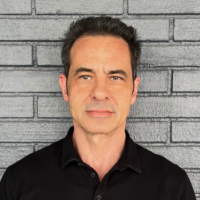
“…Strength training produces muscle, and muscle is a driver of longevity.”
-
Giuseppe Ciccolella, NSCA-CPT, CSCS, MES

There are five blue zones across the world:
Okinawa, Japan; Nuoro province, Sardinia, Italy; Nicoya, Costa Rica; Icaria, Greece; and Loma Linda, California, USA. A “Blue Zone” is characterized by longevity, having produced the largest populations of centenarians (people who live past 100 years of age) in the world. With the exception of Loma Linda, California, the majority of people who live in these areas are farmers or tradespeople (builders, carvers, etc.). And although they are miles apart—one could say worlds apart—they all share a common trait: Strength.
Strength
Strength can come in many forms—mental, emotional, spiritual—but the one that interests me most, for the sake of this article, is physical strength. We here in the US have long since moved away from agriculture and the hunting/gathering lifestyles that still take place, to some degree, in these blue zones. Day in and day out, residents of these areas climb hills, haul loads, and walk miles. Squatting is an everyday activity—and not just the ten reps we might cry about after a workout—but fifty or more on a daily basis. HIIT and SIT (High-Intensity Interval Training and Sprint Interval Training) are not just exercise modalities for them but the steep steps and tall hills they climb.
Why Muscle Matters Most
Now, I have been preaching strength training for older populations for the better part of 20 years. The benefit of strength training far exceeds any other form of exercise. Why? Because strength training produces muscle and muscle is a driver of longevity. As the foundation of your metabolism, it helps regulate blood sugar and blood lipids. The act of loading the muscle on a consistent basis remaps the brain into producing new muscle and keeping the existing muscle functional. It effectively reboots the body, particularly in older populations, into thinking it needs to live and not fade away.
Not Fade Away
What do I mean when I say fade away? Firstly, Sarcopenia—or muscle loss—and Osteoporosis—the transition into weaker bones and connective tissue—the hallmarks of frailty; from there, the onset of Dementia and other related cognitive diseases. In addition to producing muscle, strength training also helps ward off cognitive decline by oxygenating the brain, stimulating it to continue to run the very complex functions of the body. Lastly, strength training can help correct and negate many age-related maladies such as Diabetes, high blood pressure, visceral fat accumulation, hormone imbalances, and thyroid dysfunction, to name just a few. What little studies exist all point to the same thing: stay strong!
Hypertrophy vs. Strength
Given muscle is the organ of longevity, it is essential to distinguish between Hypertrophy and Strength training. Hypertrophy refers to the mass of the muscle. While hypertrophy does build some strength, it is predominantly responsible for muscle size, hence why bodybuilders focus on hypertrophy to achieve the size and definition they desire for competition. Typically, training for hypertrophy involves less weight and higher repetitions (8-10) and (short) rest periods. Strength is defined as the amount of load or weight that can be moved through space, with force, over distance. It requires heavy weight, lower reps (5 max), and a longer rest period between sets. Training for strength will produce a degree of hypertrophy, and hypertrophy will increase strength up to a certain threshold where it reaches its apex and the acquisition of strength ceases. Why is this distinction important? Because it is only through strength training that we also achieve central nervous system improvement, helping with neural pathways that are important for improving cognitive function. When it comes to more bang for your buck—strength training and lifting heavy is what delivers for years to come.
There’s More…
While strength training is a foundational part of a routine that drives longevity, it should not be the only one. HIIT/SIT (high-intensity interval training and sprint interval training) and plyometric training are key modalities to incorporate into your routine to drive adaptation and tell the mind and body that when it comes to living, you’re just getting started. While moderate exercise may have served us well for years, as we age, more of the same only provides diminishing returns—those miles logged on the treadmill will no longer keep the fat off no matter how long or far one runs/walks. Bringing strength, intensity, and power into our weekly routines is what will drive change and improvement by challenging the body and mind to adapt. If you are unsure where or how to even begin, that’s where personal trainers (like me) can help. We’re here to teach, guide, and help you achieve a strong, active life for years to come. Ultimately, it all starts with you and your commitment; that, combined with our know-how, guarantees one thing: you can get better with age!
Contact me today for a free consultation: gciccolella@gmail.com or call: 1-917-817-8373
Sponsored Links
About The Author

Giuseppe Ciccolella
Giuseppe Ciccolella, NSCA-CPT, CSCS, MES, is an NSCA-Certified Personal Trainer, Certified Strength and Conditioning Specialist, and a certified Medical Exercise Specialist, as well as a USA-certified boxing coach. He has over 25 years of experience helping people of all ages and abilities achieve their wellness goals through personalized approaches to strength training, nutrition, injury rehabilitation, and prevention.









